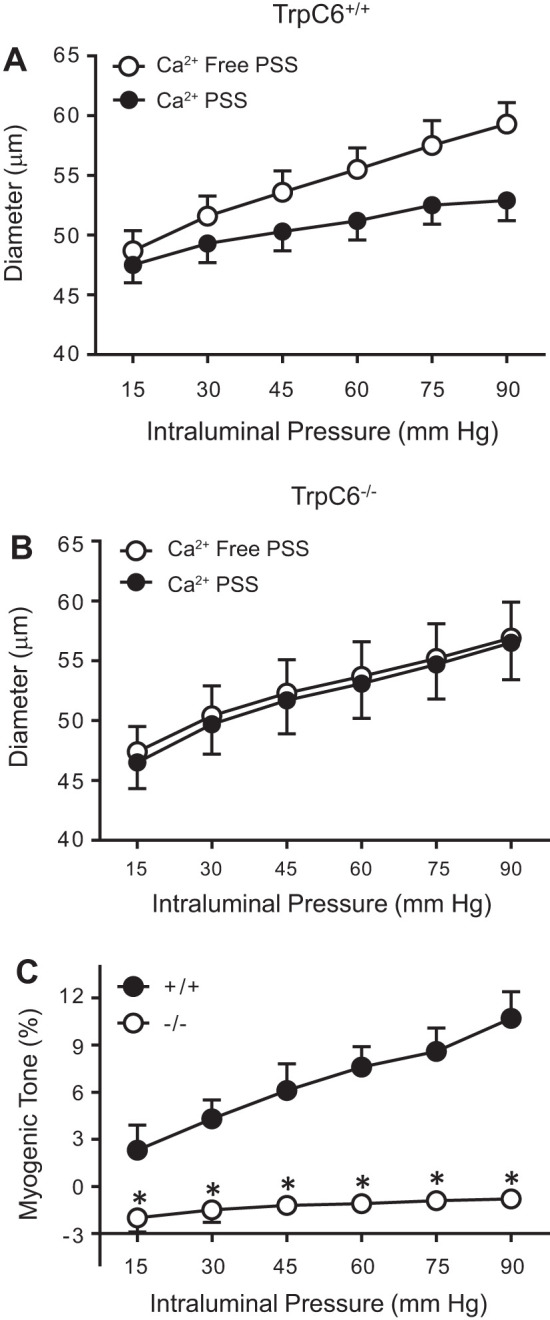Fig. 3.

Pressure-induced vasoconstriction of isolated middle cerebral arteries (MCAs). A: pressure-induced constriction of isolated MCAs from TrpC6+/+ (n = 7) mice in response to stepwise increases in intraluminal pressure under active (Ca2+-containing) conditions is lower compared with that of under passive (Ca2+-free) conditions. B: pressure-induced vasoconstriction of isolated MCAs from TrpC6−/− (n = 9) mice in response to stepwise increases in intraluminal pressure under active (Ca2+-containing) conditions is similar to that of under passive (Ca2+-free) conditions. Two-way repeated-measures ANOVA showed an effect of intraluminal pressure (P < 0.0001) and passive dilation (P = 0.0022) and an interaction between the Ca2+-free condition and intraluminal pressure (P < 0.0001). C: myogenic tone of isolated MCAs from TrpC6+/+ (n = 7) and TrpC6−/− mice (n = 9). Two-way repeated-measures ANOVA showed an effect of intraluminal pressure (P < 0.0001) and genotype (P = 0.0123) and an interaction between genotype and intraluminal pressure (P = 0.0002). Sidak’s post hoc test showed a significant effect of genotype on myogenic tone at 15 (P = 0.0237), 30 (P = 0.0009), 45 (P < 0.0001), 60 (P < 0.0001), 75 (P < 0.0001), and 90 (P < 0.0001) mmHg pressure values.
